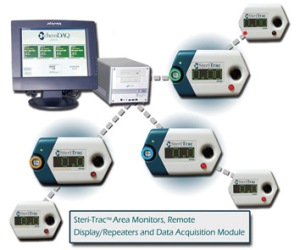Jun 28 2010
Leading toxic gas detection systems manufacturer, ChemDAQ has applied for patent protection for its Peracetic Acid (PAA) sensor, which the fourth in the company’s range of sterilant gas sensors. This sensor has been included in the company’s Steri-Trac system for gas monitoring, which already includes sensors for detecting the presence of hydrogen peroxide, ozone and ethylene oxide.
 Steri-Trac system
Steri-Trac system
The PAA sensor is capable of protecting industrial workers from known perils related to PAA exposure by constant monitoring of the presence of acidic fumes. Existing methods of PAA detection, such as badge and air sampling systems, are limited by their ability to monitor only previously known toxic gas concentrations. Moreover, these methods take numerous days or weeks to produce results. As a result, employees may continue to be affected until the problem becomes evident. The new sensor is capable of providing real-time alerts when PAA vapors of high concentrations are likely. This will facilitate the migration of workers to move the source of the gas as a preventive measure, and avoid continued exposure.
The Steri-Trac PAA sensor uses a combination of visual and audio alarms set off at the same time, to monitor and analyze exposure to gases at their location of storage and use. Given the wide areas of application of PAA, namely medical device disinfection, waste water purification, aseptic food packaging and hospital sterilization, the risk of PAA vapors affecting workers during spills or leakage is enormous. In such scenarios, regulatory agencies such as the EPA and standard organizations such as the Association for Advancement of Medical Instrumentation (AAMI) recommend the use of robust sensors to determine leakages and prevent exposure, and thereby comply with OSHA regulations.
The president and CEO of ChemDAQ, David Hilliker expressed his delight in the opportunity to get this new sensor technology patented. He expects this sensor to set a new standard in employee safety by extending its scope to the worker category.